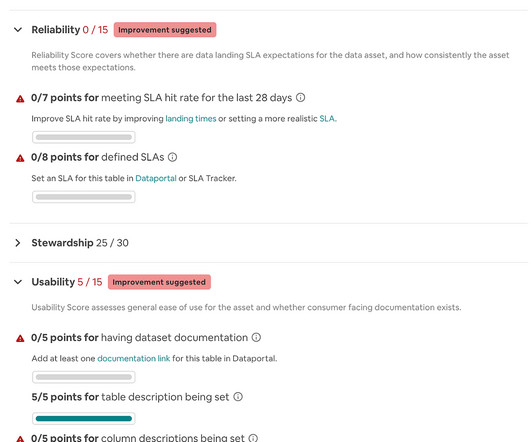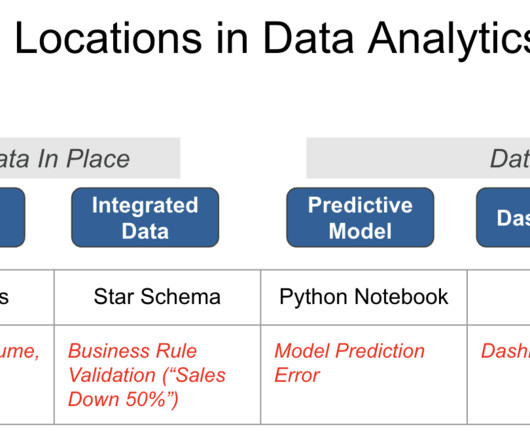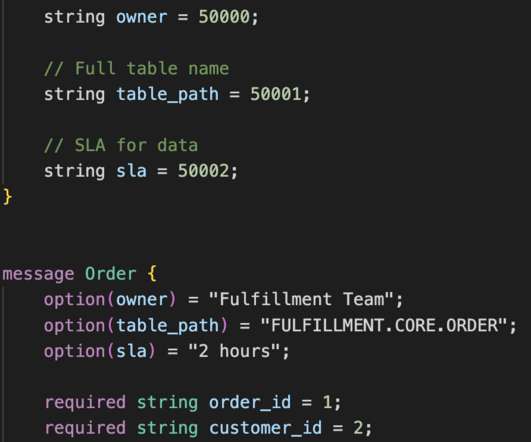8 Data Quality Monitoring Techniques & Metrics to Watch
Databand.ai
AUGUST 30, 2023
Data quality monitoring refers to the assessment, measurement, and management of an organization’s data in terms of accuracy, consistency, and reliability. It utilizes various techniques to identify and resolve data quality issues, ensuring that high-quality data is used for business processes and decision-making.















Let's personalize your content